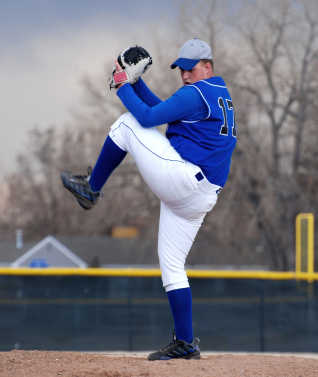Despite known risks and outcomes of the common elbow procedure known as Tommy John surgery, myths and misconceptions abound among baseball parents, coaches and players about the reasons for and benefits of the operation, says a 2011 study presented at the American Orthopaedic Society for Sports Medicine's Specialty Day in San Diego, California.
Researchers found that nearly a third of those surveyed incorrectly believed that pitch counts were not a risk factor for injury. "Even more disturbing was that fact that a quarter of players and coaches thought that a pitcher's performance could be enhanced by having a Tommy John surgery," said lead author of the study, Christopher S. Ahmad, MD of Columbia University's Center for Shoulder, Elbow and Sports Medicine.
Alarming statistics
During the spring of 2010, researchers surveyed 189 players, 15 coaches and 31 parents through either one-on-one interviews or a mail-in questionnaire.
The results were alarming and surprising:
- Half (51%) of high school athletes wrongly believed that surgery should be performed in the absence of injury with the sole intention to improve performance.
- Thirty-one percent of coaches, 28 percent of players and 25 percent of parents did not relate pitch type with injury risk.
- Despite numerous studies showing increased risk of injury based on the number of pitches thrown in a game and over the course of a year, thirty one percent of coaches wrongly believed that the number of pitches thrown was not a risk factor for injury to the elbow ligament.
- A substantial percentage also believed that control and velocity of pitches would be improved by having a Tommy John surgery performed.
- The study also determined that individuals from each group underestimated the time required to return to competition at nine months. (Typical return-to-play is a year).
In addition, identification of the surgical details of repairing the ulnar collateral ligament (UCL) and rehabilitation needs were poor among all the groups surveyed.
More education needed
"Recent studies suggest an alarming rise in UCL injuries in young players, with the implementation of breaking pitches at an early age, fatigue, overuse, showcases and single sport specialization being the key aspects of injury rate increases. While this is the first study to analyze public misperceptions related to elbow UCL injury, several other organizations are working to increase the awareness of overuse injuries and help prevent injuries, including the STOP Sports Injuries campaign and USA Baseball. Our research supports their efforts and we advocate with them to correct these public misperceptions," said Ahmad.
Myth persists
As a recent article on Tommy John surgery in the Toronto Star [1] reports, "As the success of Tommy John surgery became famous, a powerful myth took hold among many young pitchers and their parents: the procedure would make you throw harder." Though "repeatedly dispelled," says the article, "the myth persists."
"Pitchers, especially younger ones, do often return throwing harder than they did leading up to the surgery - but not because of their new ligament. Sometimes the original injury led to arm fatigue and decreased velocity before the surgery; sometimes the pitcher is stronger and in better condition after rigorous rehab."
***
For a comprehensive article about twelve ways to reduce pitching injuries in youth baseball, click here.
Source: American Orthopaedic Society for Sports Medicine
1. Kennedy B. "Inside 'Tommy John' surgery. www.thestar.com (September 6, 2013)(http://www.thestar.com/sports/2013/09/06/inside_tommy_john_surgery.html)(accessed September 11, 2013)
Most recently updated September 11, 2013








